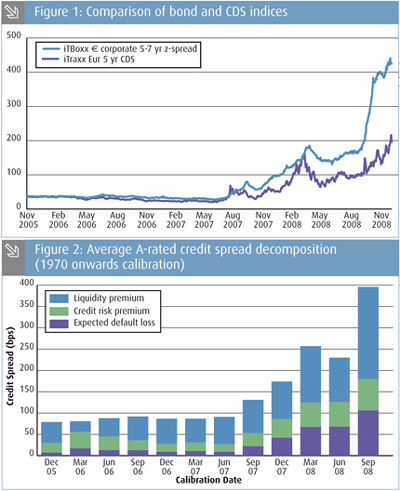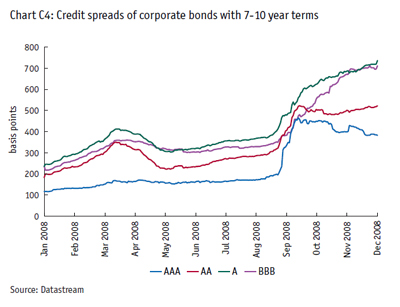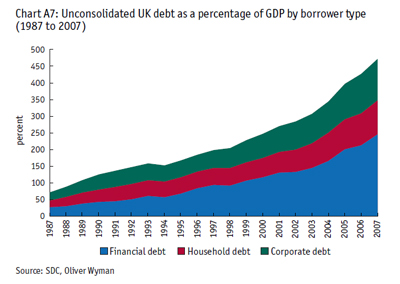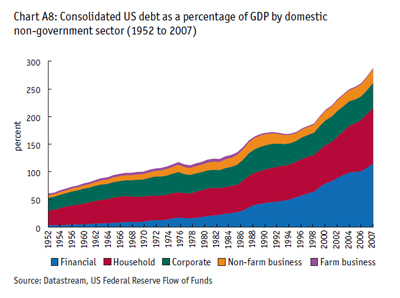Assiduous Readers will remember that OSFI made a late Christmas Eve announcement of major changes to the MCCSR guidelines, which included:
Revised methodologies for calculating available capital. The key change recognizes that unrealized gains and losses on available for sale (AFS) debt securities held by life insurance companies do not reflect the capital value of these assets to a life insurer as, in most cases, these assets will be held for the long term (e.g. to maturity). As such, OSFI is updating its life insurance company capital rules so that, when fully implemented, they will correspond to the capital treatment for banks holding similar securities (i.e. unrealized gains and losses on AFS debt securities do not change capital adequacy).
As noted yesterday, this issue has come to the fore in the UK, with companies being sternly warned to ensure that when determining the profit and loss on their annuity business, increased spreads lead to at least a certain amount of increase in the implied default risk of the assets.
In fact, OSFI’s new Capital Guidelines state:
OSFI will begin phasing out the capital adjustments for accumulated unrealized gains and losses on available-for-sale debt securities reported in Other Comprehensive Income (OCI) on December 31, 20086. At year-end 2008, companies must elect whether to phase out these adjustments over three years, or to phase them out immediately.
All this is of interest due to the following information in SunLife’s 4Q08 Earnings Release:
Net income of $129 million for the fourth quarter of 2008 was driven by an after-tax gain of $825 million from the Company’s sale of its interest in CI Financial. This was offset by a significant decline in equity markets, asset impairments, credit-related write-downs and spread widening, changes to asset default assumptions in anticipation of higher future credit-related losses, charges taken in the Company’s life retrocession reinsurance business related to the strengthening of actuarial reserves to reflect more comprehensive information on potential future premiums and claims as well as the weakening of the Canadian dollar relative to foreign currencies from losses in business segments in which the U.S. dollar is the primary currency. The Company’s hedging program helped offset some of the losses related to volatility in capital markets during the quarter.
Credit market losses include the following amounts:
| Sunlife 4Q08 Reported Credit Market Losses (CAD-million) |
|
| Write-downs & realized losses | 155 |
| Downgrades | 55 |
| Spread widening | 155 |
| Strengthening of Reserves for Asset Default Assumptions | 164 |
| Total | 529 |
With an MCCSR ratio of 232% Sun Life Assurance was well above minimum regulatory capital levels as at December 31, 2008, compared to 213% as at December 31, 2007. The increase in the MCCSR ratio is primarily due to revisions by OSFI to the MCCSR rules in the fourth quarter of 2008, as well as the impact of the portion of the proceeds of the CI Financial transaction attributable to Sun Life Assurance. This was partially offset by market impacts experienced during 2008 and write-downs on assets in Sun Life Assurance’s investment portfolio. Other subsidiaries are subject to local capital requirements in the jurisdictions in which they operate.
The current market environment highlighted the need to revise the treatment of certain components of capital to better reflect both the nature of the risks and the quality of capital supporting these risks. In response to the issues surfaced, OSFI issued several revisions to the current MCCSR rules effective December 2008. First, the minimum capital rules for segregated fund guarantees were updated to differentiate between near-term and long-term obligations. Second, companies were given the option to exclude from available capital the net after-tax unrealized gains and losses on available-for-sale bonds reflected in other comprehensive income to better reflect the long-term nature of these bonds. Finally, the requirement to hold capital for future pricing decisions was eliminated to avoid potential redundancy with risk charges and actuarial reserves.
…
The Company’s principal operating subsidiary, Sun Life Assurance, is subject to the MCCSR capital rules for a life insurance company in Canada. The MCCSR calculation involves using qualifying models or applying quantitative factors to specific assets and liabilities based on a number of risk components to arrive at required capital and comparing this requirement to available capital to assess capital adequacy. Certain of these risk components, along with available capital, are sensitive to changes in equity markets. The estimated impact on the MCCSR of Sun Life Assurance from an immediate 10% increase across all equity markets as at December 31, 2008 would be an approximate 2% – 4% increase in MCCSR. Conversely, the estimated impact on the MCCSR of Sun Life Assurance from an immediate 10% drop across all equity markets would be an approximate 3% – 5% decrease in MCCSR.
The MCCSR is a very nice number, insofar as it can be trusted. Unfortunately, there is not enough detail in their Supplementary Information (available here) to make a determination of how well their credit impairment assumptions correspond to their liability net present value assumptions.



